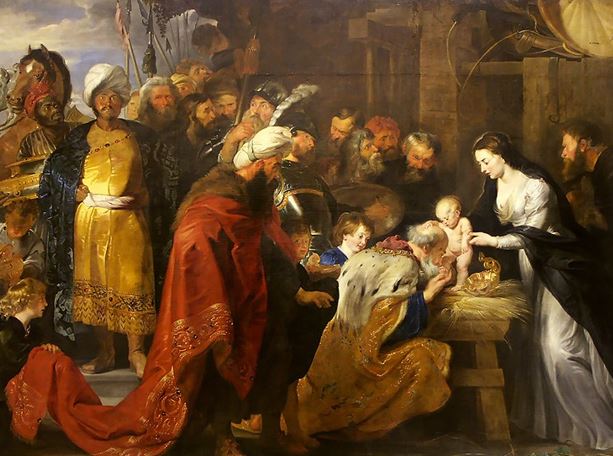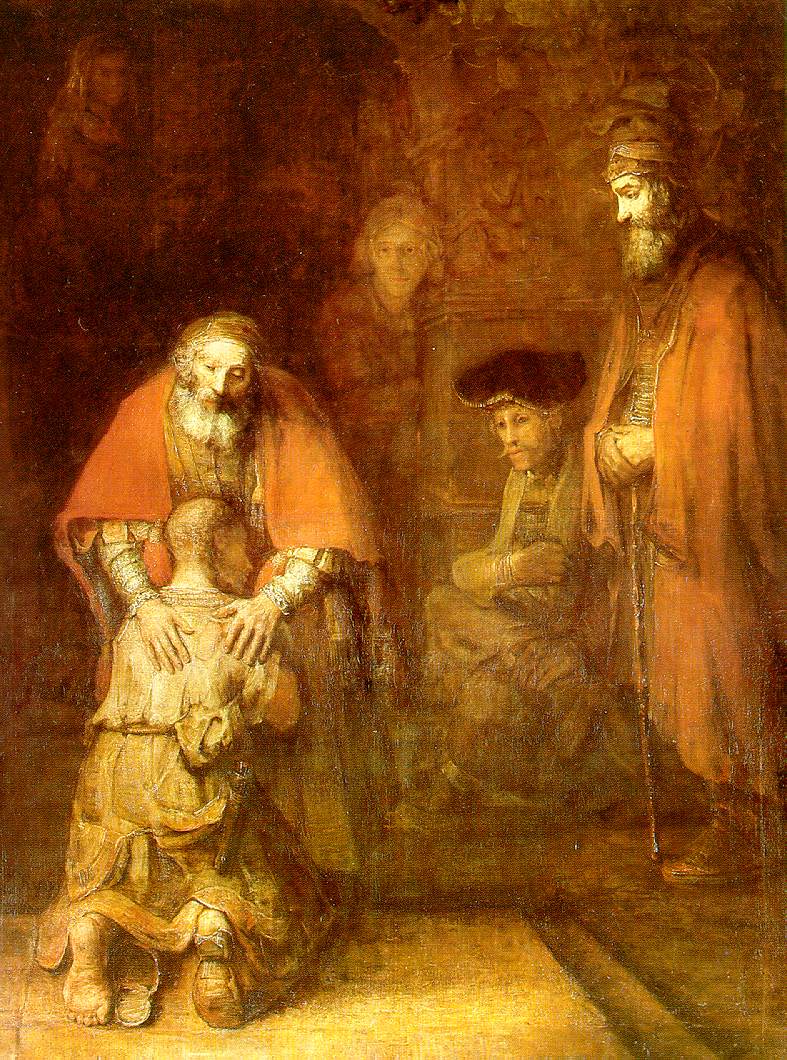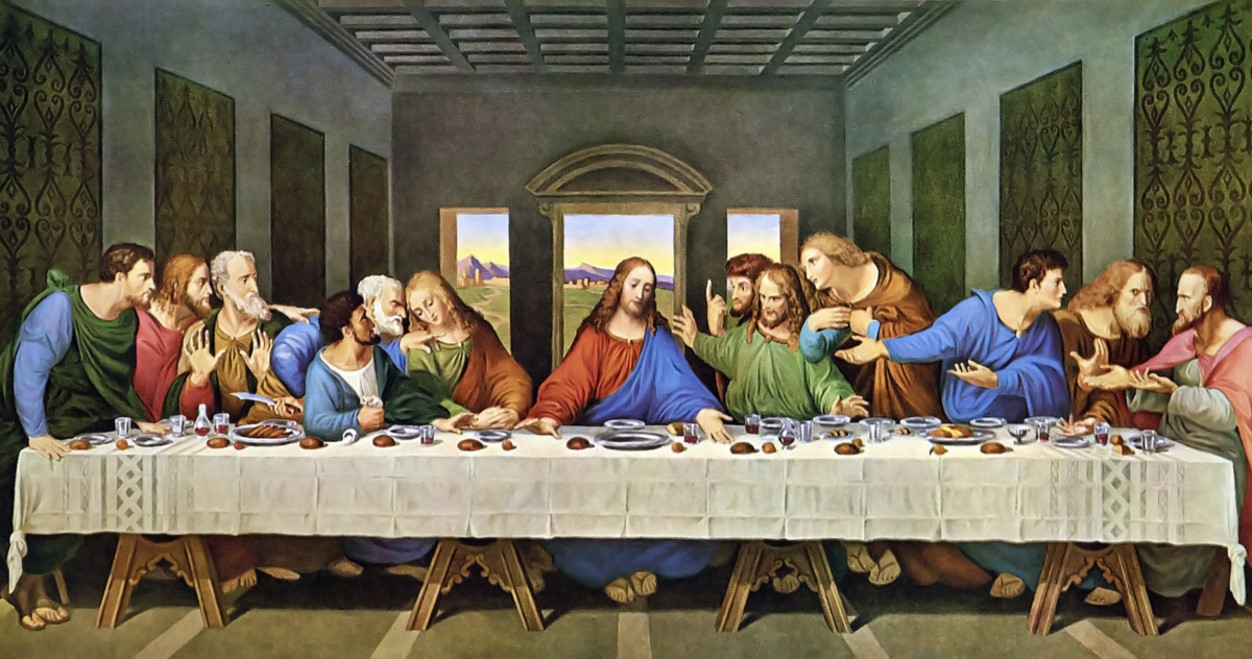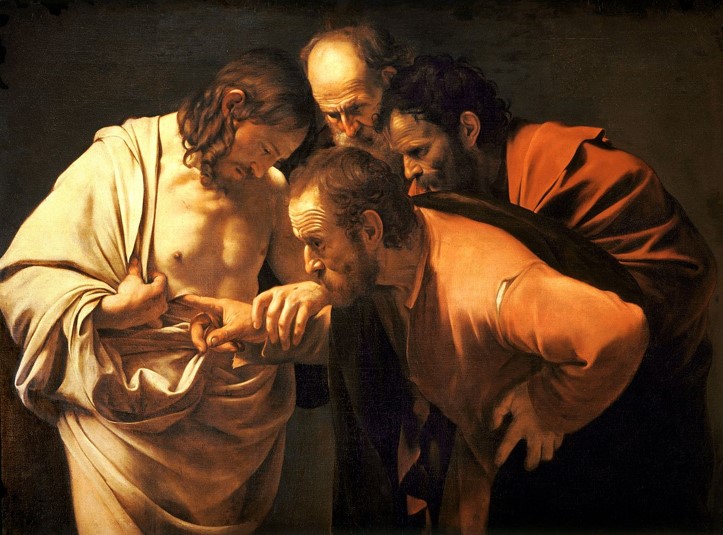
Eden Wild Goose Art
Faith in Pictures
A group gathered for four weeks to consider four well known paintings and how they connected the life of Jesus with our own personal understanding of faith.
Each week, we started by considering our own feelings 'as if we had entered the picture'. Following this we heard a short biographical talk on each painter before examining the painting itself.
Using some guidelines from the National Gallery we then explored what we could observe. At first, we could see some basic techniques of lines across the painting and the use of colour and light.
Finally, we paused to consider what our own 'take home' responses might be.
1 Reubens Adoration of the Magi

Matthew 2v1-12 - see below
A few observations
The three magi - their heads are in a line and turning in towards Jesus in worship.
The light leads of to Jesus.
Most of the other faces are looking elsewhere - who are you in the painting?
Who is Mary - she seems very well dressed?
A child's face in the exact centre looks directly at the viewer - possibly inviting us into the scene. Who would you be?
2 Rembrandt Return of the Prodigal

Luke 15:11–32 (see below)
The father's hands are different - masculine and feminine - indicating different aspects of the welcome and forgiveness.
The older son looks very unimpressed! He is waring the same clothes as the father.
We do not see the face of the younger son - he buries his face in the fathers chest.
We discovered the Rembrant's son Titus has died just before this was painted - maybe this painting revealed his heart's longing.
In what ways might you identify with the returning son?
3 Leonardo Last Supper

Matthew 26v14-30 (see below)
Leonardo has named the twelve disciples in his notebooks - so we know who they all are.
We noticed that Judas (fourth head from left) has spilt some salt - either pushed by Peter or symbolic.
Peter (fifth) has a knife (perhaps the one he had in the Garden of Gethsemane later).
John (sixth) looks like a woman - Leonardo often painted men with feminine features.
There are hands gesturing everywhere - Leonardo used Italian models - often deaf or mute who would communicate with hand gestures.
This busy scene was following Jesus’ announcement that at one of his disciples would betray him.
What your reactions, feelings or thoughts are when you consider this painting?
How does it connect with you?
Is there anything that catches your eye?
How might it challenge or comfort your own faith – wherever that might be?
4 Caravaggio The Incredulity of Saint Thomas

John 20v24-29 (see below)
Some notes based on the National Gallery 'How to read a painting'
Reading a painting is similar to reading a book:‘Reading a painting is similar to reading a book: the reader decodes symbols to establish the meaning. However, with a book we have to imagine the scene, whereas with a painting it is created for us (as it is with a film). Also, the artist has only one frame through which to communicate. When we read a book, we convert, via our imaginations, what is black and white on the page into multicolour images. However. when we read a painting, the potential barrier of text is removed and we can leap straight into multicolour. In this way, the visual image is immediately accessible and engaging. By looking closely and then exploring what is seen together as a group, we can make a raft of shared and personal connections.’
Bible passages
1 Reubens: Adoration of the Magi (At the start of Jesus’ life)
Matthew 2v1-12
After Jesus was born in Bethlehem in Judea, during the time of King Herod, Magi from the east came to Jerusalem and asked,
‘Where is the one who has been born king of the Jews? We saw his star when it rose and have come to worship him.’
When King Herod heard this he was disturbed, and all Jerusalem with him.
When he had called together all the people’s chief priests and teachers of the law, he asked them where the Messiah was to be born.
‘In Bethlehem in Judea,’ they replied, ‘for this is what the prophet has written:
‘“But you, Bethlehem, in the land of Judah,
are by no means least among the rulers of Judah;
for out of you will come a ruler
who will shepherd my people Israel.”’
Then Herod called the Magi secretly and found out from them the exact time the star had appeared.
He sent them to Bethlehem and said,
‘Go and search carefully for the child. As soon as you find him, report to me, so that I too may go and worship him.’
After they had heard the king, they went on their way, and the star they had seen when it rose went ahead of them until it stopped over the place where the child was. When they saw the star, they were overjoyed. On coming to the house, they saw the child with his mother Mary, and they bowed down and worshipped him. Then they opened their treasures and presented him with gifts of gold, frankincense and myrrh. And having been warned in a dream not to go back to Herod, they returned to their country by another route.
2 Rembrandt: Return of the Prodigal (stories in his ministry)
Luke 15v11-32
Jesus continued: ‘There was a man who had two sons.
The younger one said to his father, “Father, give me my share of the estate.”
So he divided his property between them.
‘Not long after that, the younger son got together all he had, set off for a distant country and there squandered his wealth in wild living.
After he had spent everything, there was a severe famine in that whole country, and he began to be in need. So he went and hired himself out to a citizen of that country, who sent him to his fields to feed pigs. He longed to fill his stomach with the pods that the pigs were eating, but no one gave him anything.
‘When he came to his senses, he said,
“How many of my father’s hired servants have food to spare, and here I am starving to death! I will set out and go back to my father and say to him: Father, I have sinned against heaven and against you. I am no longer worthy to be called your son; make me like one of your hired servants.” So he got up and went to his father.
‘But while he was still a long way off, his father saw him and was filled with compassion for him; he ran to his son, threw his arms round him and kissed him.
‘The son said to him, “Father, I have sinned against heaven and against you. I am no longer worthy to be called your son.”
‘But the father said to his servants, “Quick! Bring the best robe and put it on him. Put a ring on his finger and sandals on his feet. Bring the fattened calf and kill it. Let’s have a feast and celebrate. For this son of mine was dead and is alive again; he was lost and is found.” So they began to celebrate.
‘Meanwhile, the elder son was in the field. When he came near the house, he heard music and dancing. So he called one of the servants and asked him what was going on.
Your brother has come,” he replied, “and your father has killed the fattened calf because he has him back safe and sound.”
‘The elder brother became angry and refused to go in. So his father went out and pleaded with him. But he answered his father,
“Look! All these years I’ve been slaving for you and never disobeyed your orders. Yet you never gave me even a young goat so I could celebrate with my friends. But when this son of yours who has squandered your property with prostitutes comes home, you kill the fattened calf for him!”
3 Leonardo: Last Supper (Before the cross)
Matthew 26v14-30
On the first day of the Festival of Unleavened Bread, the disciples came to Jesus and asked,
‘Where do you want us to make preparations for you to eat the Passover?’
He replied, ‘Go into the city to a certain man and tell him,
“The Teacher says: my appointed time is near. I am going to celebrate the Passover with my disciples at your house.”’
So the disciples did as Jesus had directed them and prepared the Passover.
When evening came, Jesus was reclining at the table with the Twelve. And while they were eating, he said,
‘Truly I tell you, one of you will betray me.’
They were very sad and began to say to him one after the other, ‘Surely you don’t mean me, Lord?’
Jesus replied, ‘The one who has dipped his hand into the bowl with me will betray me. The Son of Man will go just as it is written about him. But woe to that man who betrays the Son of Man! It would be better for him if he had not been born.’
Then Judas, the one who would betray him, said, ‘Surely you don’t mean me, Rabbi?’
Jesus answered, ‘You have said so.’
While they were eating, Jesus took bread, and when he had given thanks, he broke it and gave it to his disciples, saying, ‘Take and eat; this is my body.’ Then he took a cup, and when he had given thanks, he gave it to them, saying, ‘Drink from it, all of you. This is my blood of the covenant, which is poured out for many for the forgiveness of sins. I tell you, I will not drink from this fruit of the vine from now on until that day when I drink it new with you in my Father’s kingdom.’
When they had sung a hymn, they went out to the Mount of Olives.
4 Caravaggio: The Incredulity of Saint Thomas (Following the Resurrection)
John 20v24-29
Now Thomas (also known as Didymus), one of the Twelve, was not with the disciples when Jesus came.
So the other disciples told him, ‘We have seen the Lord!’
But he said to them, ‘Unless I see the nail marks in his hands and put my finger where the nails were, and put my hand into his side, I will not believe.’
A week later his disciples were in the house again, and Thomas was with them. Though the doors were locked, Jesus came and stood among them and said, ‘Peace be with you!’
Then he said to Thomas, ‘Put your finger here; see my hands. Reach out your hand and put it into my side. Stop doubting and believe.’
Thomas said to him, ‘My Lord and my God!’
Then Jesus told him, ‘Because you have seen me, you have believed; blessed are those who have not seen and yet have believed.’